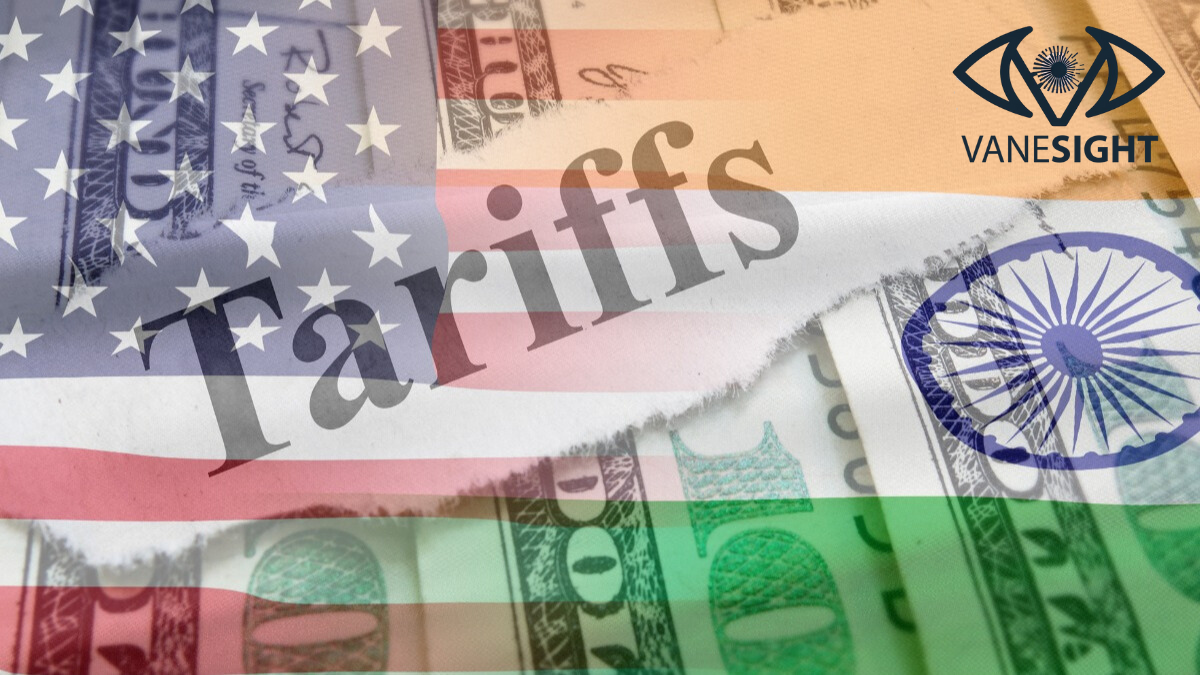The global steel industry is a cornerstone of modern economies, driving infrastructure development, manufacturing, and construction. However, the imposition of tariffs, particularly by the US, has significantly disrupted the industry, reshaping trade flows and creating challenges for both producing and consuming country. India, as the world’s second-largest steel producer, plays a pivotal role in this dynamic landscape. In order to comprehend the function of steel trade, this blog looks at significant actors, global import export data, import export business patterns, the effect of U.S. tariff increases on India’s steel imports and exports, and hormonous system (HS) codes 72 and 73.
The U.S. Steel Tariffs: A Catalyst for Global Trade Shifts
On February 10, 2025, U.S. President Donald Trump announced a 25% tariff on foreign steel and aluminum imports, aiming to bolster domestic production and safeguard national economic interests. This policy shift is anticipated to take effect in early March, ending previous exemptions for certain countries. India’s Steel Export Landscape India stands as the world’s 13th largest steel exporter, with exports totaling 9.2 million metric tons in 2023—a 19.4% decrease from the previous year.
The primary destinations for Indian steel exports include countries such as Sri Lanka, Malaysia, and Italy.The impact of these tariffs was felt globally, with countries like India, China, Japan, and the European Union facing significant challenges in accessing the U.S. market. The tariffs also reshaped global import export trade patterns, forcing steel-exporting nations to find alternative markets and adapt their strategies.
Global Steel Trade Data: Key Trends and Insights
The global import export trade of steel is a complex web of imports, exports, and shipments, with HS codes 72 and 73 playing a crucial role in tracking trade flows. Here’s a breakdown of the key trends:
Iron and Steel-HS Code 72 covers primary forms of iron and steel, including ingots, billets, and slabs. This category is critical for understanding the trade of raw and semi-finished steel products.
Articles of Iron or Steel-HS Code 73 includes finished products like pipes, tubes, and structures. This category is essential for analyzing the trade of value-added steel products used in construction, automotive, and manufacturing industries.
Global Import Export Data
In 2022, the leading exporters of iron and steel were China ($69.8 billion), Germany ($36.9 billion), Japan ($35.7 billion), South Korea ($29 billion), and Indonesia ($28.8 billion). The U.S. tariffs are likely to disrupt these established trade flows, prompting exporting nations to seek alternative markets.
India’s steel imports have been on the rise, with significant increases from countries like South Korea. The imposition of U.S. tariffs may lead to a diversion of steel exports from other countries toward India, further saturating the domestic market.
The imposition of tariffs has led to a shift in shipment routes, with exporters redirecting their products to regions like Southeast Asia, Africa, and the Middle East.
India’s Steel Trade: Import-Export Data and Trends
India’s steel industry is a cornerstone of its economy, contributing significantly to GDP, employment, and infrastructure development. The country is not only a major producer but also a significant consumer and trader of steel. Let’s break down India’s steel trade dynamics using import export trade data.
Exports: Navigating Tariff Barriers
India’s steel exports have faced challenges due to tariffs imposed by the U.S. and other countries. According to the Ministry of Commerce and Industry, India’s steel exports in FY 2022-23 stood at approximately 13.5 million metric tons, a decline from previous years due to trade restrictions.
- Key Export Markets: India primarily exports steel to countries in Asia, the Middle East, and Europe. However, the U.S. market, which was once a significant destination, has seen a decline due to the 25% tariff under Section 232.
- HS Code 72 and 73: India’s exports under these codes include raw materials like iron ore and finished products like pipes and tubes, which are essential for infrastructure projects.
- Top Export Companies in India: Major players like Tata Steel, JSW Steel, and Steel Authority of India Limited (SAIL) dominate India’s steel exports. These companies have adapted to the changing trade landscape by diversifying their markets and focusing on value-added products.
Imports: Meeting Domestic Demand
While India is a major steel producer, it also imports certain grades of steel to meet domestic demand. In FY 2022-23, India imported around 5 million metric tons of steel, primarily high-grade and specialty steel.
- Key Import Sources: India imports steel from countries like Japan, South Korea, and China. These imports often include value-added products that are not widely produced domestically.
- HS Code 72 and 73: Imports under these codes include raw materials like iron ore and finished products like pipes and tubes, which are essential for infrastructure projects.
Trade Deficit and Self-Sufficiency
India’s steel trade deficit has narrowed in recent years due to increased domestic production and reduced reliance on imports. Government initiatives like the National Steel Policy aim to achieve self-sufficiency in steel production, targeting a capacity of 300 million metric tons by 2030.
Top Steel Importing and Exporting Countries
The global import export trade of steel is dominated by a few key players. Here’s a look at the top steel-importing and exporting countries:
Top Steel Exporters
- China: The largest exporter of steel, accounting for over 50% of global steel exports.
- Japan: A major exporter of high-quality steel products, particularly to Southeast Asia and the U.S.
- India: The second-largest producer and a significant exporter, with a focus on semi-finished and value-added products.
- South Korea: Known for its advanced steel manufacturing capabilities and high-quality exports.
Top Steel Importers
- United States: Despite its tariffs, the U.S. remains a major importer of steel to meet domestic demand.
- Germany: A key importer of steel for its automotive and manufacturing industries.
- Vietnam: A growing importer of steel, driven by rapid industrialization and infrastructure development.
The Role of Shipments in Steel Trade
Shipments are a critical component of the global import export trade of steel, with logistics and transportation playing a key role in ensuring timely delivery. The imposition of tariffs has forced steel producers and traders to adapt their shipment strategies.
- Diversification of Routes: With the U.S. market becoming less accessible, exporters have shifted their focus to regions like Southeast Asia, Africa, and the Middle East.
- Cost Optimization: Rising shipping costs and supply chain disruptions have prompted exporters to optimize logistics and reduce costs.
- Value-Added Products: To compete in global markets, exporters are increasingly focusing on value-added products, which command higher prices and are less susceptible to tariffs.
The Way Forward for India and the Global Steel Industry
The steel industry is at a crossroads, with tariffs and trade restrictions creating both challenges and opportunities. For India, the path forward involves:
- Enhancing Domestic Production: Investing in capacity expansion and technology upgrades to meet growing domestic demand.
- Exploring New Markets: Diversifying export markets to reduce dependence on any single region.
- Focusing on Sustainability: Embracing green steel initiatives to align with global sustainability goals.
- Leveraging Trade Agreements: Negotiating favorable trade agreements to mitigate the impact of tariffs.
Conclusion
The U.S. steel tariffs have clearly shaken up global import and export trade, creating difficulties for exporting countries like India. Despite these challenges, steel remains a key driver of economic growth, and its importance cannot be ignored. By using import and export trade data, understanding HS codes, and adjusting to new trade realities, India can manage the effects of tariffs and strengthen its role in the global steel market. As the world continues to deal with trade tensions and economic uncertainties, steel will remain a crucial factor in shaping the future of global trade and commerce.
FAQ
1. How have U.S. steel tariffs impacted India’s steel exports?
The U.S. imposition of a 25% tariff on steel imports is expected to slash Indian steel exports to the U.S. by 85%, leading to a surplus that may flood the domestic market, intensifying competition and potentially driving down prices.
2. Which countries are the top steel importers and exporters globally?
The top steel exporters include China (the largest exporter), Japan, India, and South Korea. The largest steel importers are the United States, Germany, and Vietnam. Despite tariffs, the U.S. remains a major importer due to its domestic demand, while countries like Vietnam are growing importers due to rapid industrialization.


Leave a Reply